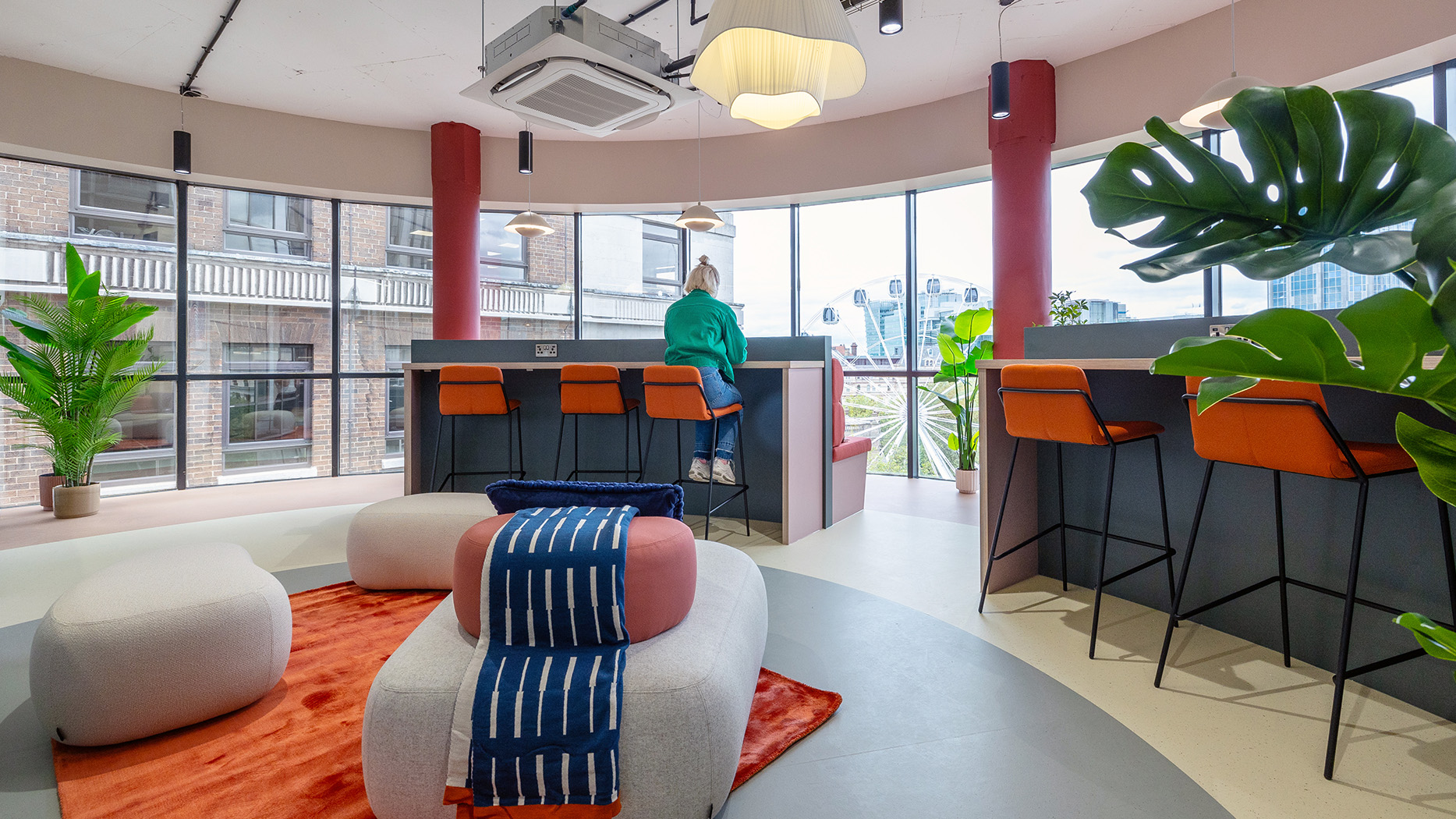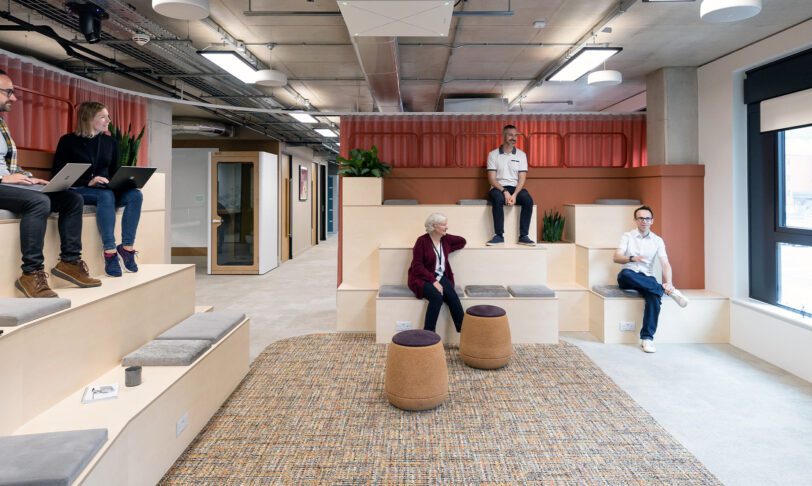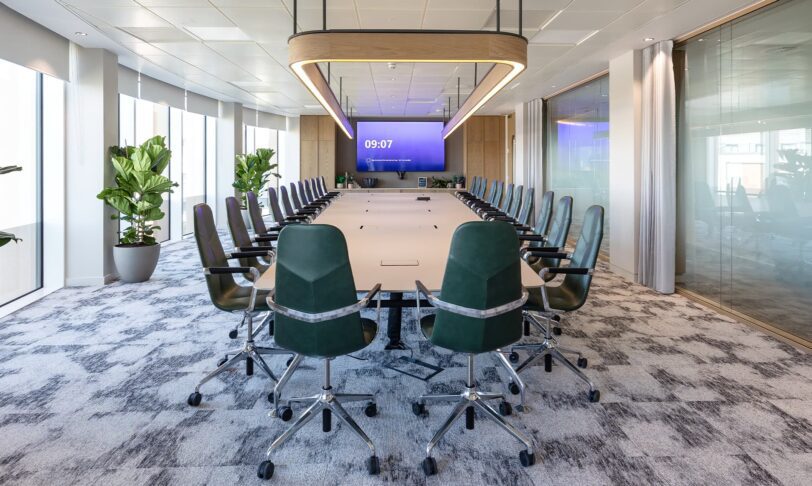From workplace to wellbeing: the evolution of office design
Office design in the 21st century has dramatically changed from previous decades. Whilst we have seen a resurgence of certain designs, overall, the office design has completely transformed – from formal workplace rigidity to open-plan or coworking spaces focused on employee well-being.
A survey conducted by Gensler in 2005 highlighted how poorly designed offices erode productivity. By understanding the evolution of office design, we as designers can analyse the impacts of office spaces on productivity and employee well-being. In turn, this allows us to produce changes that create the most success for businesses and their employees.
A study by The Human Space on Biophilic design found “a third of office workers say that the design of an office would affect their decision to work at a company” and “two thirds of respondents report feeling happy when walking into bright office environments”. But to better understand what a “bright office environment” looks like today, let’s go back in time to understand how things have changed.
A brief history of office design
The early 1900s – Influenced by the theory of ‘Taylorism’, office designs in the early 1900s tended to imitate that of the factory. With rigid rows of formality, offices were designed to fit as many people in as possible to increase efficiency. Workforces were monitored highly by management to ensure production levels were at their highest.
The early 1960s – Office landscapes began to change, with uniformity of desks became less favoured and the German concept ‘Burolandshaft’ – translating to “office landscape” grew influence. Burolandshaft focussed on open plan office designs with plants separating desks to create an “office landscape” and transform the strict working environments. The Burolandshaft office design was not warmly received by everyone, due to noise and lack of privacy.
The late 1960s – In response to Burolandshaft offices, Robert Propst designed the ‘Action Office’ – incorporating individual workstations where employees had their own individual space to work. For Propst, it then seemed a natural progression to the “cubicle” office. Cubicles allowed employees to have their own personalised space and became the most common office design during the 1980s and 1990s. The focus on workplace efficiency resurrected during this time with many companies cramming as many cubicles as possible into offices.
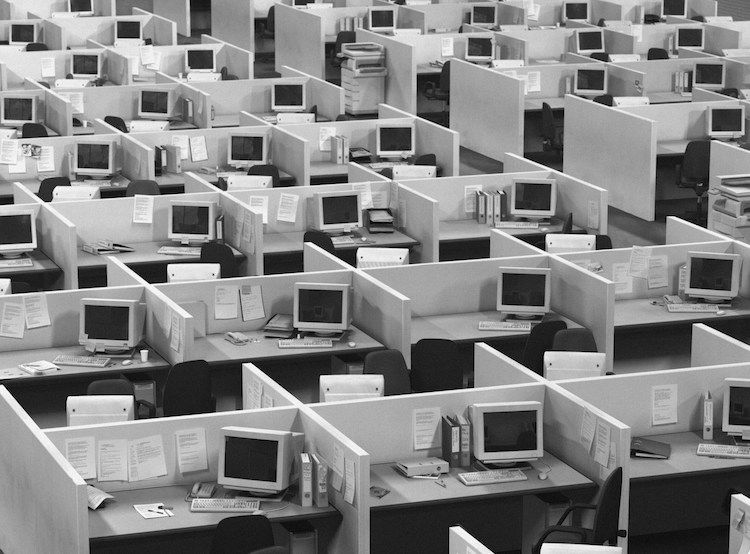
A common theme is noticeable within many of the early office designs- minimising costs and increasing profits is prioritised above employees and their welfare. Repeatability is the process of repeatedly working in the same space resulting in a lack of opportunity for social interaction and networking- which early office designs mirror. Work efficiency and productivity is of course at the centre of office design, however in the most recent decades, workplace well-being has rightly taken centre stage in office designs.
The beginning of the open plan office
By the late 1990s, people were growing tired of cubicles, noting their negative impact on wellbeing. Instead, more collaborative, open plan spaces began to be considered. Open plan offices to begin with were utilised by companies to cram more people into smaller spaces, however they have since evolved into community-focussed spaces where employees have increased freedom. During this period, we can observe the reappearance of the Burolandshaft concept with spaces becoming communal and more sociable.
The modern day open plan office
Modern open plan offices combine privacy and efficiency, with multiple spaces for meetings, individual work and socialising. Office design in the modern day has abandoned the restrictions of rows and cubicles and instead supports the interconnectedness between health, wellbeing, creativity, sustainability, and productivity in workplaces. Aspects of modern-day offices include playful features such as ping pong tables, rooftop terraces, coffee stations- and at Interaction, even a bar area!
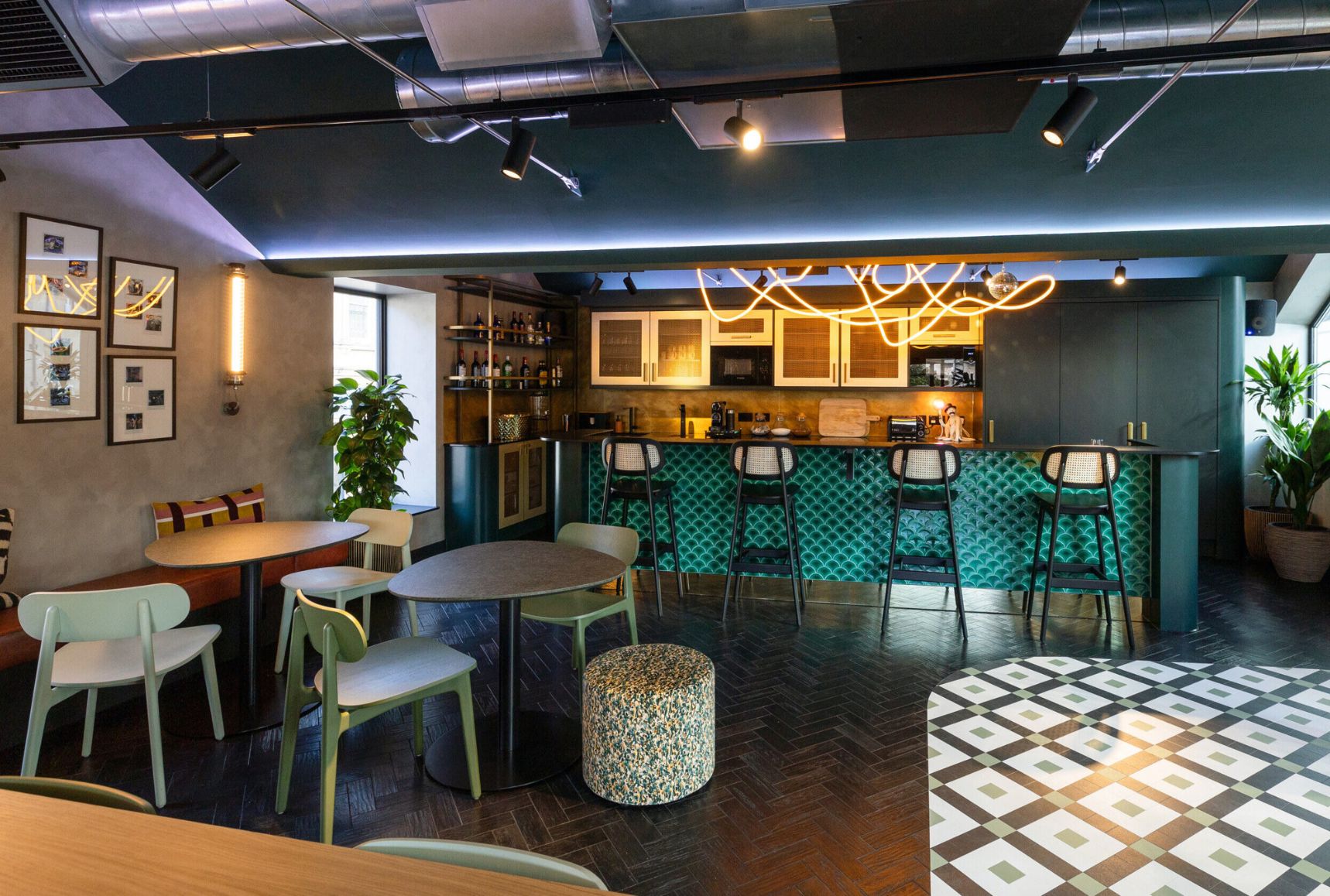
Modern office design trends
We have discussed how office design has dramatically evolved, as well as designs re/disappearing in popularity, but what are the current modern office design trends? Office environments have elevated in personality, through the utilisation of colour, comfort and collaboration. Research continues to show the positive impact office design can have on wellbeing, for example, an emphasis on the psychology of colour, the benefits of biophilia design and the development of collaboration furniture.
Bringing the outdoors in
Research indicates the positive effects a natural environment has on human beings. Maximising natural light through spacious windows and adding greenery to workspaces can positively impact employee wellbeing. You can see examples of how we utilise greenery in our office designs in our case studies – our biggest project to date used over 1,000 plants!

Collaboration furniture
It is clear technology has been vital in how office design has evolved. Screen sharing capabilities, smartboards and video conferencing software have increased flexibility and decreased the need to be restricted to a singular desk. Collaborative furniture such as conference tables, breakout rooms and communal spaces combined with dedicated spaces for different forms of work, facilitate innovation, creativity and relaxation within work environments.

Inclusivity
In modern day office design, inclusivity is a key principle, and rather than a trend in office design, it is a necessity. Employees rely on inclusivity to feel comfortable and relaxed in their work environment. We recently wrote about the importance of acknowledging the diversity of disabilities, genders, sexualities, races and religions when designing an inclusive workplace. Take a look at our case studies to see how we incorporate diversity and inclusivity into our designs.
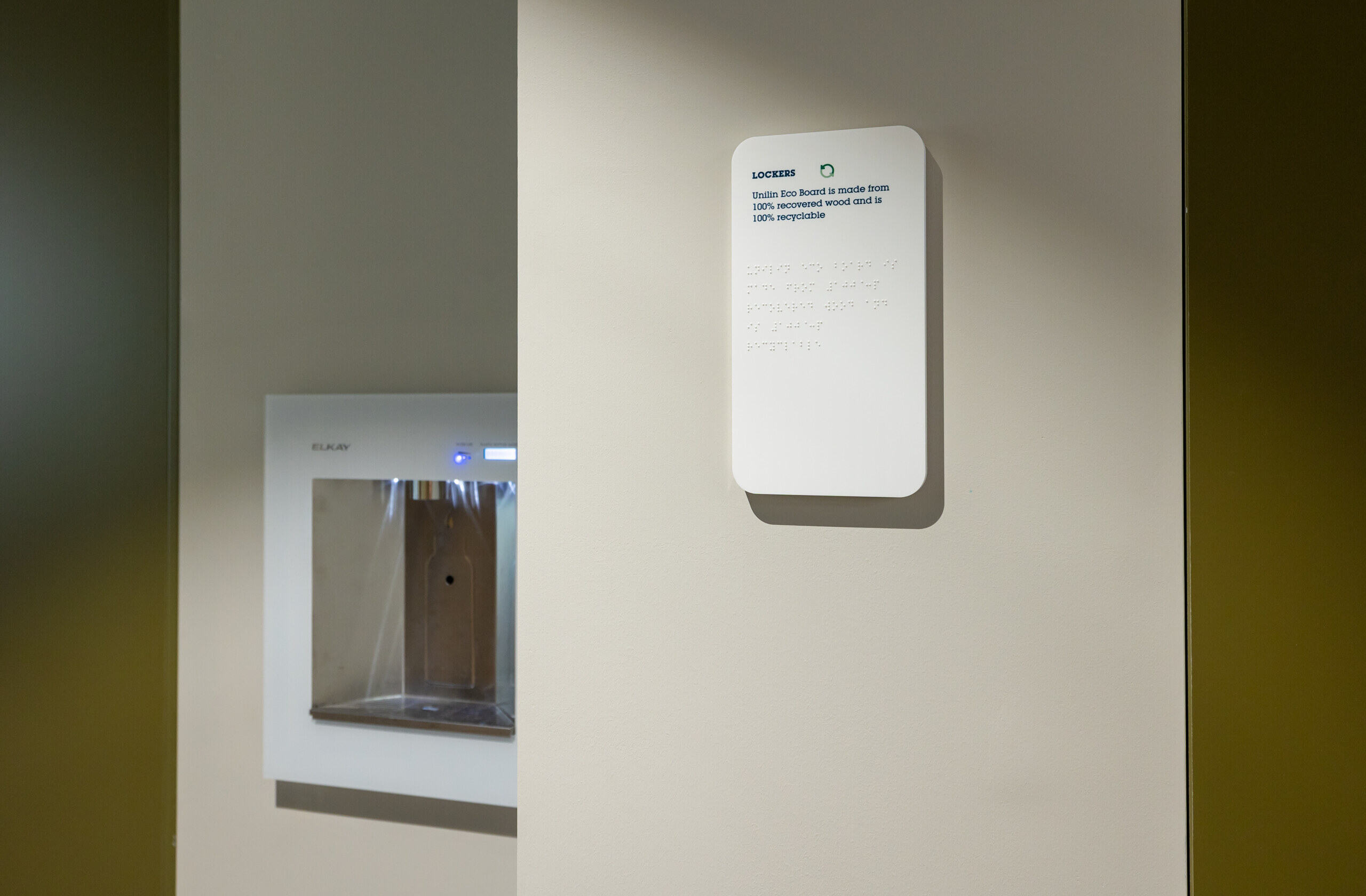
The Future of Office Design
There is no doubt that the covid pandemic has changed the functions of the office. With remote working becoming the norm, office design has had to revaluate it’s purpose. As discussed, office design in the modern day considers not only how it can be the most profitable, but now emphasises the health, well-being, and collaboration of employees. Flexible working has become a popular form of working, allowing employees to work wherever best suits them. Are immersive environments becoming ever increasingly popular or are people accepting the move back to in person offices?
Bringing comfort into office design
Before the pandemic, the amount of people remote working was a small percentage, however the pandemic caused an increase in hybrid working practices with around 24% of people now working from home. Office design is likely to continue to evolve in order to entice greater percentages of people back into the office. Imitating the home in the workplace has become a popular trend with separate comfort spaces for relaxing and socialising. Take a look at some of our projects for relaxation and comfort space inspiration.
The Metaverse
Whilst enticing people back into the office remains a core feature of office design, technology is beginning to evolve through creating realistic virtual office environments, meaning people can work from all across the world. As hybrid working has become the norm for many, collaborative tools have become a necessity to allow for flexible working environments. Inside the Metaverse, individuals can access their own desk but via a VR headset. So whilst they can physically be in the office, they can also be anywhere else in the world but in the exact same office space.
Embracing the future of office design
We recently discussed how embracing innovation in office design is vital for the transformation of a modern workplace. Along with well-being strategies and collaboration techniques, the modern-day technology that exists to innovate office design is expansive and super exciting.
Ready to revolutionise your workspace? Contact us today at 01225485600 or Chat with Charlie for a personalised consultation.
